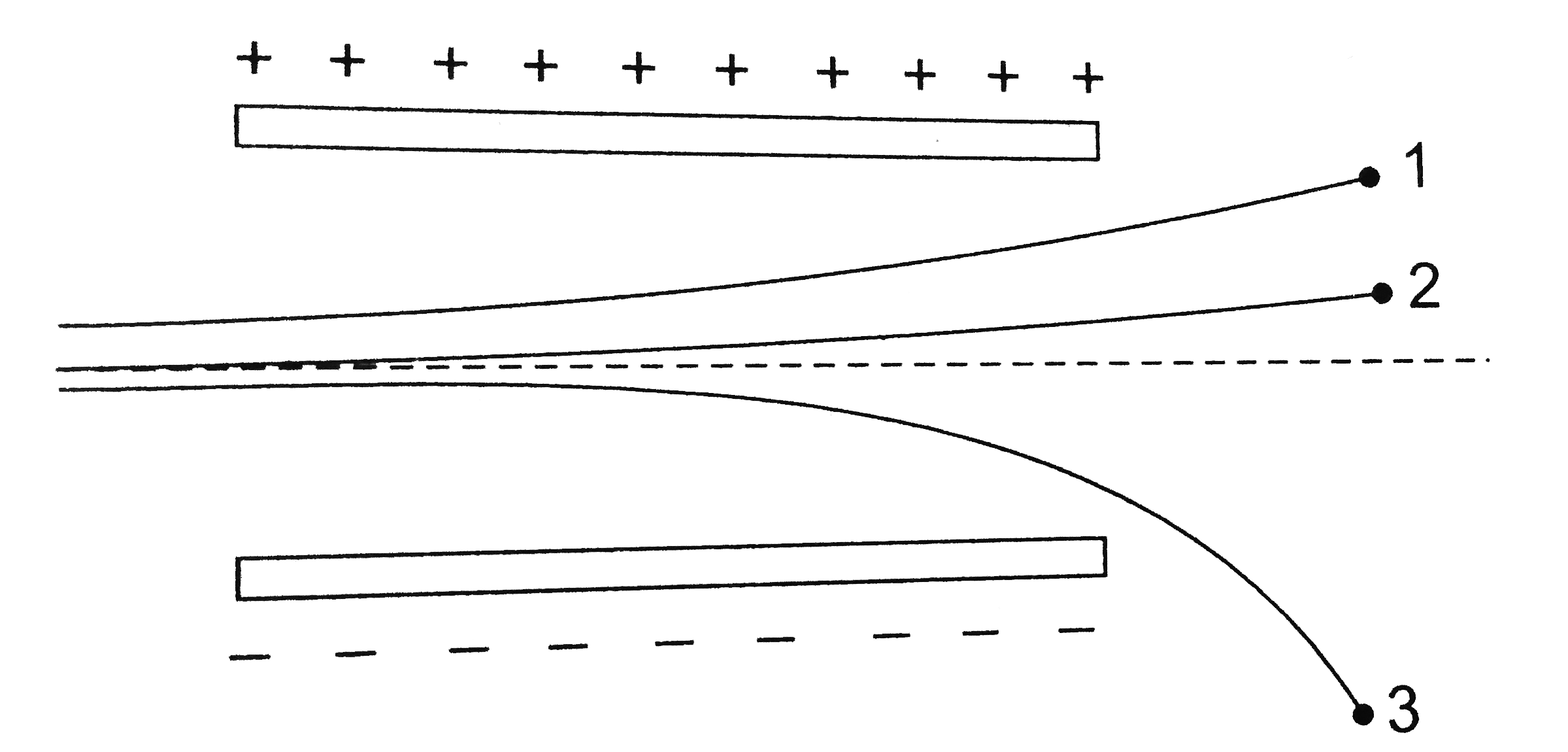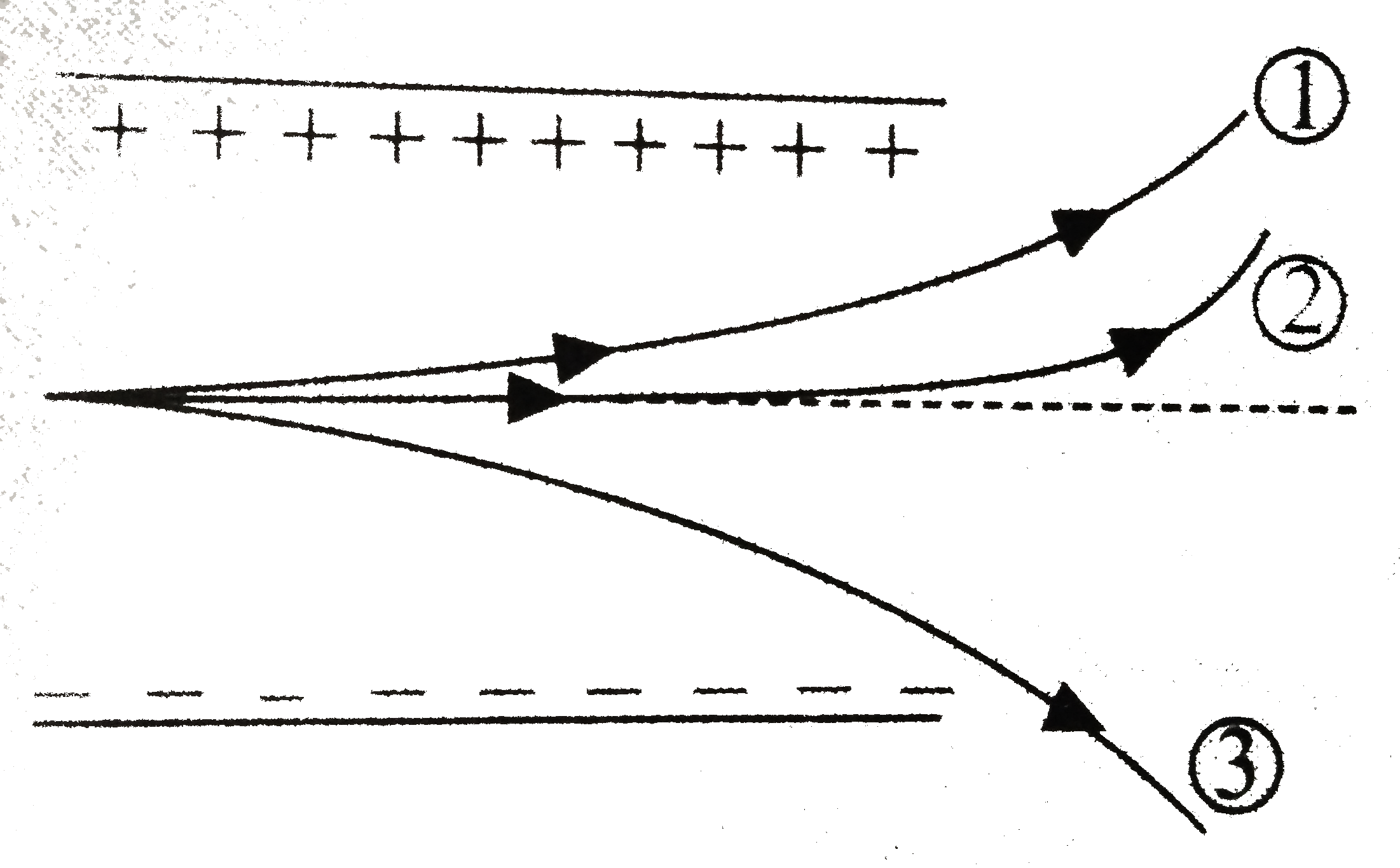Figure shows tracks of three charged particles crossing a uniform electrostatic field with same velocities along horizontal. Give the sign of the three charges. Which particle has the highest charge to mass ratio?

1 and 2 are negatively charged 3 positively charged Third particle has highest charge to mass ratio
1 and 2 are positively charged 3 positively charged Third particle has highest charge to mass ratio
1 and 2 are negatively charged 3 positively charged second particle has highest charge to mass ratio
1 and 2 are negatively charged 3 negatively charged Third particle has highest charge to mass ratio
The correct Answer is:A
Opposite charges attract each other and same charges repel each other. It can be observed that particles 1 and 2 both move towards the positively charged plate and repel away from the negatively charged plate. Hence, these two particles are negatively charged. It can also be observed that particle 3 moves towards the negatively charged plate and repels away from the positively charged plate. Hence, particle 3 is positively charged.
The charge to mass ratio (emf) is directly proportional to the displacement or amount of deflection for a given velocity. Since the deflection of particle 3 is the maximum, it has the highest charge to mass ratio.
Topper's Solved these Questions
- ELECTRIC CHARGES AND FIELDSBOOK - NCERT ENGLISHCHAPTER - ELECTRIC CHARGES AND FIELDSEXERCISE - Exercise
34 Videos
- DUAL NATURE OF RADIATION AND MATTERBOOK - NCERT ENGLISHCHAPTER - DUAL NATURE OF RADIATION AND MATTEREXERCISE - All Questions
32 Videos
- ELECTROMAGNETIC INDUCTIONBOOK - NCERT ENGLISHCHAPTER - ELECTROMAGNETIC INDUCTIONEXERCISE - Exercise
17 Videos
Similar Questions
Figure shows the tracks of three charged particles in a unform electrostatic field projected parallel to a plate with the same velocity. Give the signs of the three charges. Which of the three charges. Which of the three particles has the highest charge-to-mass ratio?

View SolutionThe acceleration of a charged particle in a uniform electric field is
View Solution
Knowledge Check
A positively charged particle is released from rest in a uniform electric field. The electric potential energy of the charge.
Aremains a constant because the electric field is uniform.Bincreases because the charge moves along the electric field.Cdecreases because the charge moves along the electric field.Ddecreases because the charge moves opposite to the electric field.
The path of a charged particle projected into a uniform transverse electric field is
View SolutionWhen a charged particle enters a uniform magnetic field its kinetic energy
View SolutionThe path of a charged particle moving in a uniform steady magnetic field cannot be a
View SolutionIf a charged particle enters perpendicular in the uniform magnetic field then
View SolutionA positively charged particle is released from rest in a uniform electric field. The electric potential energy of the charge.
View SolutionA positively charged particle is released from rest in a uniform electric field. The electric potential energy of the charge.
View SolutionThree charged particle sare in equilibrium under their electrostatic forces only. Then
View Solution
